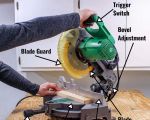1. Understanding DIY Project Levels
When embarking on a DIY project, understanding the level of difficulty involved is crucial for success and satisfaction. DIY projects generally range from beginner to intermediate and advanced levels, each requiring different skills, time commitments, and tools. Beginners may focus on simple crafts or small repairs, while advanced projects could involve complex carpentry, electrical work, or remodeling.
Knowing these distinctions helps you avoid frustration and potential safety risks. The goal is to select a project that challenges you just enough to learn and grow without becoming overwhelming. Many guides and online resources label projects by difficulty, but it’s important to interpret these categories based on your own capabilities.
2. Assessing Your Skill Level
Before choosing a project, take a realistic assessment of your DIY skills. Reflect on past experiences and consider your comfort with tools, materials, and problem-solving. If you’re new to DIY, start with small, low-risk projects like assembling furniture or painting. Those with some experience might try intermediate projects such as building shelves or installing fixtures.
Be honest about your limitations—knowing when to seek help or additional learning can save time and frustration. Self-assessment tools and tutorials can aid in this process by offering benchmarks for skills like measuring, cutting, and joining materials.
3. Matching Project Complexity with Experience
Once you understand your skill level, align your project choice accordingly. Complex projects require thorough planning, precise measurements, and advanced techniques, so they’re better suited for experienced DIYers. For example, installing a new electrical outlet demands knowledge of wiring and safety protocols, while painting a room is generally beginner-friendly.
Selecting the right level means considering not only your technical skills but also available time, budget, and tools. Avoid jumping into an advanced project without preparation, as it can lead to costly mistakes or injury. Gradually increasing project complexity builds confidence and competence.
4. Tools and Materials Considerations
Your choice of DIY project level is closely tied to the tools and materials you have or are willing to acquire. Basic projects might only need hand tools like screwdrivers and hammers, while advanced tasks often require power tools, specialized equipment, or quality materials.
Investing in the right tools can enhance efficiency and safety, but it’s important not to overcommit to expensive gear before you’re ready. Start by purchasing essentials and expand your toolkit as your skills grow. Websites like ToolNest offer a curated selection of tools and advice to help you find the best equipment for your project level.
5. Common Mistakes When Choosing DIY Project Levels
A common mistake is underestimating the difficulty of a project, which leads to incomplete work or safety hazards. Conversely, some DIYers choose overly simple projects and miss out on growth opportunities. Another pitfall is ignoring the importance of preparation and failing to read instructions thoroughly.
Many beginners also overlook the value of trial runs or seeking expert advice before starting. These errors often cause frustration and project abandonment, but with awareness and planning, they can be avoided.
6. Real-Life Case Study of Level Selection
Consider Emily, a homeowner who wanted to renovate her kitchen backsplash. She initially chose an advanced tile installation project without prior experience, which led to difficulties with cutting and aligning tiles. After consulting with a local expert, Emily scaled back to a beginner-friendly peel-and-stick backsplash project. She completed it successfully, gaining confidence to tackle more complex renovations later.
Emily’s story highlights the importance of choosing the right level for your DIY project and being flexible enough to adjust plans based on your skills and results.
7. Tips for Successful DIY Project Selection
To choose the right level for DIY projects effectively, consider these tips:
- Start small and gradually increase complexity.
- Be honest about your skills and limitations.
- Research thoroughly and use trusted resources.
- Invest in essential tools and learn proper usage.
- Seek guidance from experienced DIYers or professionals.
- Use websites like ToolNest to find the best tools and project ideas suited to your level.
By following these guidelines, you can ensure a rewarding and safe DIY experience tailored to your individual capabilities and goals.









